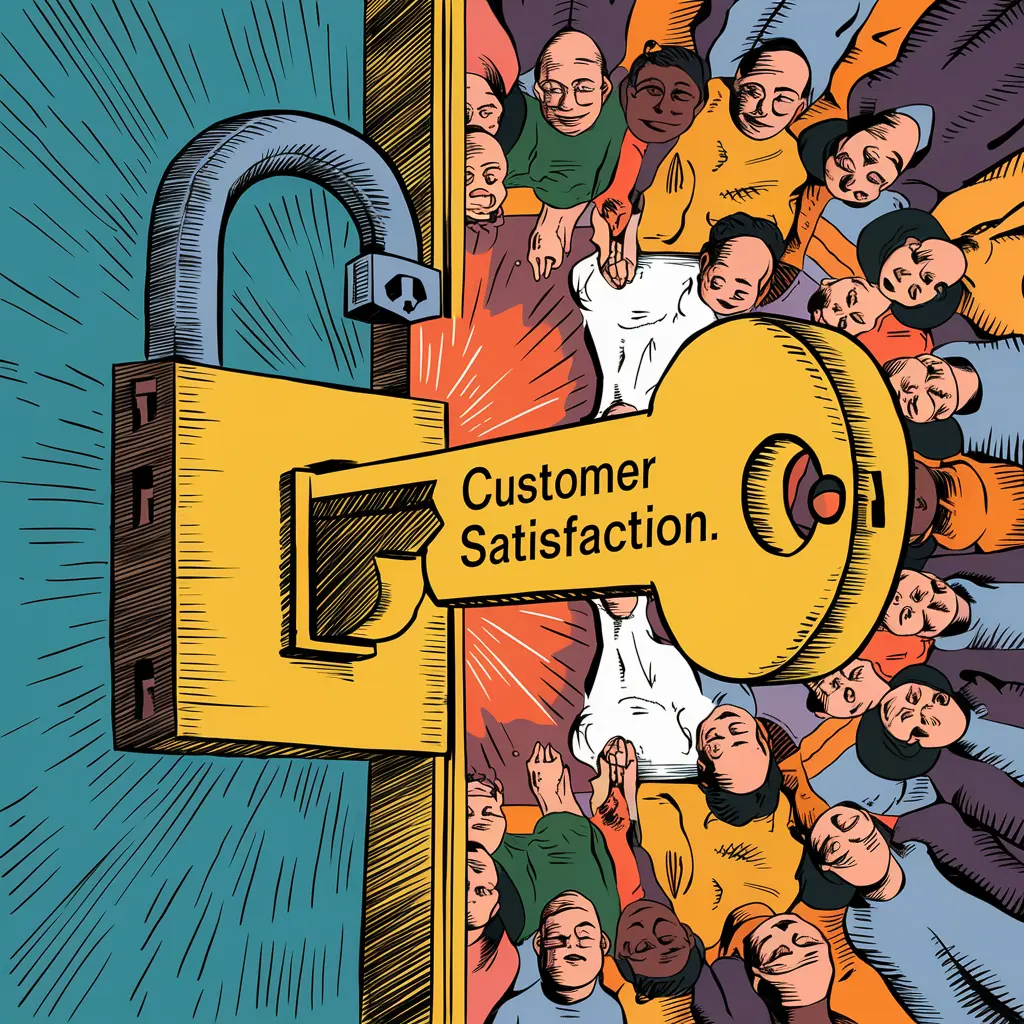Unlocking Growth: The Crucial Role of Customer Satisfaction Processes

Customer satisfaction is not just a goal—it’s an essential element of a successful business strategy. Acting as the barometer for measuring how well a company’s products or services meet or exceed customer expectations, it’s crucial to establish a dedicated process to enhance this critical metric. Let’s delve into why an effective customer satisfaction process is indispensable for any business aiming to thrive.
Identifying Drivers for Retention and Loyalty
Implementing a robust customer satisfaction process is foundational in pinpointing what attracts customers and what might deter them. This insight allows businesses, from SMBs utilizing sophisticated financial reporting to large enterprises exploring business scaling strategies, to make necessary adjustments that foster loyalty and reduce churn.
The Role of Customer Satisfaction in Retention
For businesses, the cost of retaining an existing customer is significantly lower than acquiring a new one. Customers that have had positive experiences are more likely to return, trusting your brand and finding convenience in repeat purchases. Business Process Consulting often highlights that a well-managed customer satisfaction system is crucial in identifying these loyalty-inspiring factors.
Impact on Customer Advocacy
Customer loyalty extends beyond mere retention; it encapsulates an emotional bond between the customers and your brand. Satisfied customers often become brand advocates, recommending your products or services, such as those offered by Bookkeeping Services Miami, to others. This advocacy is crucial in a competitive market and can be cultivated through a diligent focus on customer satisfaction.
Word-of-Mouth: The Viral Marketing Tool
Positive word-of-mouth is an incredibly effective marketing tool, often more trusted than traditional advertising. Customers who are pleased with their experience, possibly with an AI business advisor, are likely to share their positive views on social networks, exponentially increasing your brand’s exposure and aiding in customer acquisition.
Direct Link to Business Growth and Profitability
There’s a direct correlation between customer satisfaction and overall business performance. Satisfied customers are likely to engage more, purchasing additional services or products and being more receptive to upselling opportunities. A solid customer satisfaction framework can significantly enhance financial stability and profitability, especially for Financial Reporting for SMBs.
Crafting Your Customer Satisfaction Blueprint: A Step-by-Step Guide
Identifying Customer Needs
The initial step to a successful customer satisfaction strategy involves understanding your customers’ needs and expectations through surveys, interviews, and feedback forms. Businesses engaged in Business Scaling Strategies will find that analyzing this data to tailor products or services can substantially boost customer satisfaction.
Setting Clear Expectations
It’s crucial to clearly communicate what your customers can expect from your offerings. This transparency prevents misunderstandings and ensures customers are satisfied with their interactions, an approach often recommended by Business Process Consulting experts.
Delivering Quality Products or Services
The essence of customer satisfaction lies in the quality of your offerings. Ensure that your products or services meet, if not exceed, the expectations set forth. Implementing rigorous quality control processes is essential in maintaining high standards.
Providing Excellent Customer Service
Effective customer service is pivotal in any customer satisfaction strategy. Training your staff to be knowledgeable and responsive ensures that customer inquiries and issues are handled promptly and empathetically, reinforcing customer satisfaction.
Regular Feedback and Continuous Improvement
Establish mechanisms for regular customer feedback to gauge satisfaction and identify improvement areas. This ongoing loop of feedback and enhancement is vital for continuous growth and customer retention.
Metrics to Gauge Customer Satisfaction Success
Measuring Success Through Surveys
Utilize customer satisfaction surveys to directly assess customer feelings towards your products or services. These surveys should combine numerical rating systems with open-ended questions to gather comprehensive insights.
Net Promoter Score (NPS)
This metric gauges customer loyalty and their likelihood to recommend your business. A high NPS is indicative of strong customer loyalty and overall satisfaction.
Customer Effort Score (CES)
Measure the ease of interaction with your company with CES, which asks customers to rate the effort required to get their issues resolved. A lower effort score typically correlates with higher satisfaction and loyalty.
Understanding Customer Churn Rate
Understanding Customer Churn Rate:
Keep an eye on the percentage of customers who discontinue their business with you. A high churn rate might signal underlying issues with customer satisfaction or competitive pressures.
Analyzing Data for Informed Decision-Making
The data collected from these metrics are invaluable for making informed decisions. Look for patterns and correlations that can help refine your customer satisfaction strategy and drive your business forward.
Takeaways and Action Items
Building a successful business hinges on effectively implementing a customer satisfaction process. More than a tactical choice, it’s a strategic necessity that focuses on exceeding customer expectations consistently. This approach not only enhances retention and loyalty but also fuels organic word-of-mouth promotion, broadening your brand’s reach naturally. Ultimately, a robust customer satisfaction process is foundational, fostering an environment where customer advocacy and loyalty drive sustainable business growth.
Implementing an effective customer satisfaction strategy involves understanding customer needs, setting clear expectations, delivering top-quality products, and providing exceptional service. With regular feedback and a commitment to continuous improvement, this customer-first approach is integral to your business operations. It not only fosters lasting relationships but turns customers into brand ambassadors. Achieving outstanding customer satisfaction is a continuous pursuit, with each satisfied customer marking progress towards long-term growth and profitability.
| ✳️Define Feedback Objectives ✳️Choose the Right Tools and Channels ✳️Integrate Feedback into Operations ✳️Communicate and Act on Feedback | |
| ✳️Assess Current Training and Skills Gaps ✳️Develop a Comprehensive Training Curriculum ✳️Implement Regular Training Sessions ✳️Monitor Progress and Gather Feedback | |
| ✳️Conduct a Comprehensive Quality Audit ✳️Develop Improvement Strategies ✳️Implement Changes and Monitor Results ✳️Establish Continuous Quality Improvement Processes | |
| ✳️Identify Stakeholder Communication Needs ✳️Select and Set Up Appropriate Channels ✳️Develop and Implement Communication Protocols ✳️Monitor, Evaluate, and Adapt | |
| ✳️Establish a Review Schedule ✳️Gather Comprehensive Feedback and Data ✳️Review Data to Pinpoint and Prioritize Improvement Areas ✳️Implement Changes and Monitor Results |
Get your FREE 8 Gears Assessment Score in 10 minutes!


